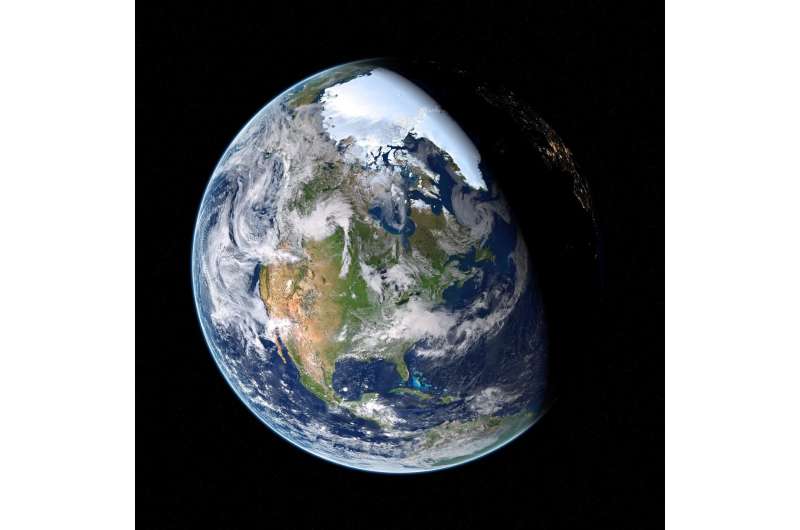CO2 levels in the Northern Hemisphere shape carbon uptake

Carbon dioxide (CO2), one of the major greenhouse gases, doesn't distribute evenly around the globe. Spatial variation of CO2 regulates the climate system and carbon cycle through a physiological effect and radiative forcing.
However, there is still great uncertainty about how this non-uniform spatial distribution of atmospheric CO2 concentration affects the carbon cycle of the Northern Hemisphere.
Recently, Dr. Peng Jing from Prof. Dan Li's research team from the Institute of Atmospheric Physics, Chinese Academy of Sciences, conducted a systematic study on how the spatial distribution of atmospheric CO2 concentration influences the carbon sink of terrestrial ecosystems.
The researchers used the Earth System Model (ESM) to estimate carbon uptake in the mid–high latitudes from 2031 to 2060 under the SSP5-8.5 future emissions scenario.
Results showed that in the high latitudes, non-uniform CO2 led to a reduction in Net Ecosystem Production (NEP) by -0.1 Pg C yr-1. This mainly resulted from a 1.5-fold greater increase in soil respiration than in net primary production (NPP). In the mid-latitudes, meanwhile, the decrease in carbon uptake was generally due to a two-fold greater decrease in NPP than soil respiration.
In addition, the decrease in precipitation was closely correlated with local carbon uptake, which could explain this decrease in NPP. "We also found that, in East Asia, changes in atmospheric circulation induced by the non-uniform CO2 might have reduced the amount of large-scale precipitation by -9 mm yr-1," said Peng. "This reduction was the primary contributor (98%) to the decrease in overall precipitation, possibly strengthening the limitation of water on plant growth, which would cause a decline in NEP."
Peng suggested that such spatial variation in CO2 concentrations should be assessed in ESM for possible impacts on local carbon uptake.
This study was published in Journal of Geophysical Research: Atmospheres.
More information: Jing Peng et al, Spatially Varying in CO 2 Concentrations Regulates Carbon Uptake in the Northern Hemisphere, Journal of Geophysical Research: Atmospheres (2022). DOI: 10.1029/2022JD037732
Journal information: Journal of Geophysical Research - Atmospheres
Provided by Chinese Academy of Sciences




















